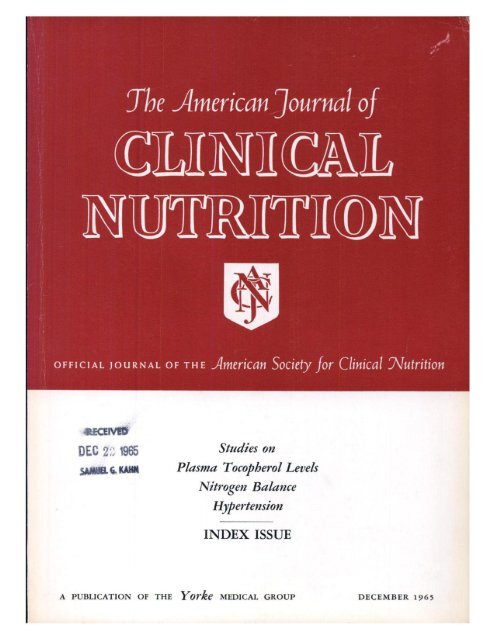全球领导营养不良倡议(GLIM)。
IF 6.9
1区 医学
Q1 NUTRITION & DIETETICS
引用次数: 0
摘要
对于不同医疗机构成人营养不良的诊断标准缺乏全球共识,限制了我们分享有意义的数据和比较有希望的干预措施的能力。全球营养不良领导倡议(GLIM)是一项全球合作努力,旨在解决这一缺陷。目前对营养不良、疾病和炎症之间相互作用的理解被用于创建一个由病因学和表型标准组成的简单诊断框架。它是专门为医疗保健环境设计的,在这些环境中,熟练的营养专业知识、实验室评估和高科技身体成分方法可能不容易获得。本文的目的是通过我们对GLIM相关研究文献和程序的持续回顾,提出争议、局限性和研究差距。我们认同这些问题,也认同GLIM工作组为解决这些问题所做的持续努力。GLIM营养不良标准的使用与其他经过验证的工具中发现的标准非常相似,这为进一步标准化用于表征营养不良标准的营养不良语言和严重程度临界值提供了机会。临床试验注册编号-不适用。本文章由计算机程序翻译,如有差异,请以英文原文为准。
The Global Leadership Initiative on Malnutrition (GLIM)
A lack of global consensus on diagnostic criteria for malnutrition in adults in diverse health care settings limits our ability to share meaningful data and compare promising interventions. The Global Leadership Initiative on Malnutrition (GLIM) is a collaborative global effort to address this shortcoming. A current understanding of the interplay between malnutrition, disease, and inflammation was used to create a simple diagnostic framework comprising etiologic and phenotypic criteria. It was specifically designed to accommodate healthcare settings where skilled nutrition expertise, laboratory assessments, and high technology body composition methodologies may not be readily available. The purpose of this article is to present controversies, limitations, and research gaps that have been recognized through our ongoing review of GLIM-related research literature and procedures. We share these issues and the ongoing efforts of GLIM working groups to address them. The use of GLIM malnutrition criteria that closely resemble those found in other validated tools raises the opportunity to further standardize malnutrition language and severity cutoffs used to characterize malnutrition criteria.
求助全文
通过发布文献求助,成功后即可免费获取论文全文。
去求助
来源期刊
CiteScore
12.40
自引率
4.20%
发文量
332
审稿时长
38 days
期刊介绍:
American Journal of Clinical Nutrition is recognized as the most highly rated peer-reviewed, primary research journal in nutrition and dietetics.It focuses on publishing the latest research on various topics in nutrition, including but not limited to obesity, vitamins and minerals, nutrition and disease, and energy metabolism.
Purpose:
The purpose of AJCN is to:
Publish original research studies relevant to human and clinical nutrition.
Consider well-controlled clinical studies describing scientific mechanisms, efficacy, and safety of dietary interventions in the context of disease prevention or health benefits.
Encourage public health and epidemiologic studies relevant to human nutrition.
Promote innovative investigations of nutritional questions employing epigenetic, genomic, proteomic, and metabolomic approaches.
Include solicited editorials, book reviews, solicited or unsolicited review articles, invited controversy position papers, and letters to the Editor related to prior AJCN articles.
Peer Review Process:
All submitted material with scientific content undergoes peer review by the Editors or their designees before acceptance for publication.

 求助内容:
求助内容: 应助结果提醒方式:
应助结果提醒方式:


